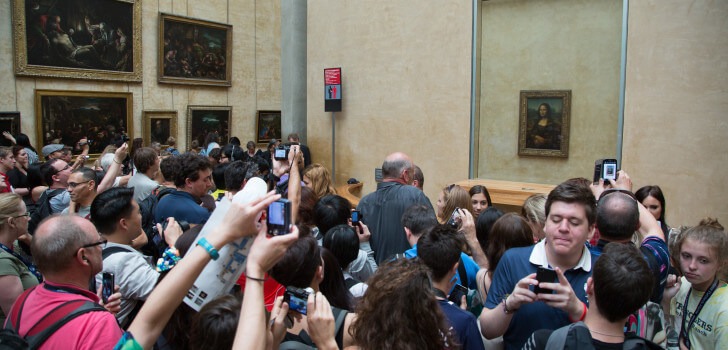One of the world’s most famous paintings – the Mona Lisa – was painted on top of another painting, according to French scientist Pascal Cotte.
Cotte has spent 10 years studying the painting using reflective light technology to analyze the painting. He now claims that the earlier portrait lies hidden underneath the surface of Leonardo da Vinci’s most celebrated artwork.
A reconstruction of the hidden painting shows another image of a sitter looking off to the side, instead of the famous direct gaze of the painting which hangs in the Louvre Museum in Paris, France. The hidden image does not share the Mona Lisa’s enigmatic smile.
Mona Lisa is believed to be a portrait of Lisa Gherardini, painted between 1503 and 1506, with some experts saying Leonardo continued working on the painting even as late as 1517.
The Louvre Museum is not commenting on Cotte’s claims, saying that his study of the painting “was not part of the (the Louvre’s) scientific team”.
But the scientist is sticking to his analysis.
Cotte, the co-founder of Lumiere Technology in Paris, was given permission to study the Mona Lisa in 2004 using a technique he pioneered called the Layer Amplification Method (LAM). It works by projecting a series of intense lights onto a painting, with a camera taking measurements of the lights’ reflections, from which Cotte says he is able to reconstruct what has occurred between paint layers.
“We can now analyze exactly what is happening inside the layers of the paint and we can peel like an onion all the layers of the painting. We can reconstruct all the chronology of the creation of the painting,” he says.
Cotte believes the image he has reconstructed underneath the surface of the painting is Leonardo’s original Lisa.
“The results shatter many myths and alter our vision of Leonardo’s masterpiece forever. When I finished the reconstruction of Lisa Gherardini, I was in front of the portrait and she is totally different to Mona Lisa today. This is not the same woman,” says Cotte
He also claims to have found two more images under the Mona Lisa’s surface – an outline of a portrait with a larger head, bigger hands and smaller lips and another “Madonna-style image with Leonardo’s etchings of a pearl headdress”.
Art historian Andrew Graham-Dixon who is producing a documentary about the famous painting says, “I have no doubt that this is definitely one of the stories of the century. There will probably be some reluctance on the part of the authorities at the Louvre in changing the title of the painting because that’s what we’re talking about – it’s goodbye Mona Lisa, she is somebody else.”
Other experts are skeptical of Cotte’s claims.
Martin Kemp, Emeritus Professor of the History of Art at the University of Oxford, says, “They (Cotte’s images) are ingenious in showing what Leonardo may have been thinking about. But the idea that there is that picture as it were hiding underneath the surface is untenable.”
“I do not think there are these discrete stages which represent different portraits. I see it as more or less a continuous process of evolution. I am absolutely convinced that the Mona Lisa is Lisa,” he says.
Stay Connected